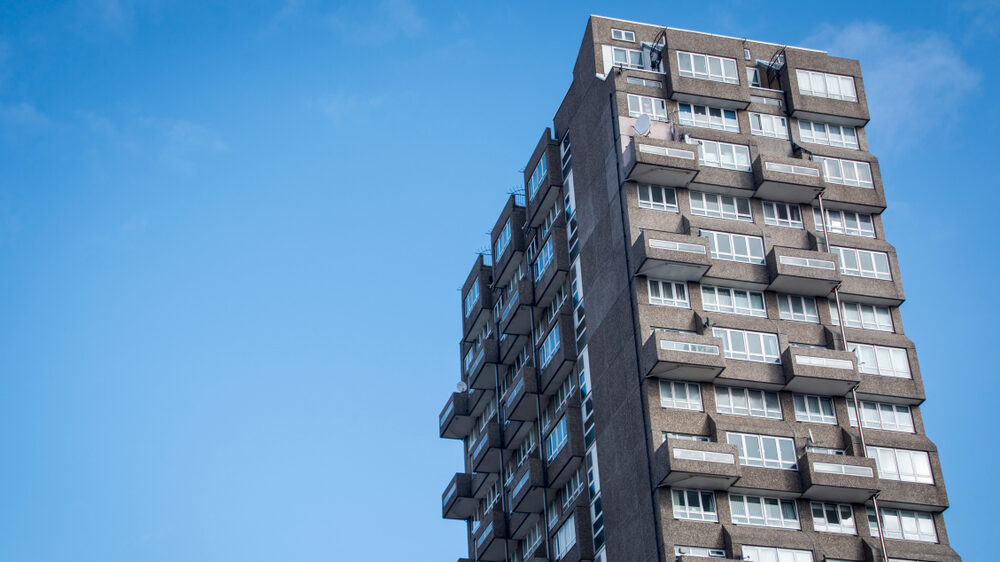High-rise building residents’ safety perceptions and experiences detailed in new HSE report
- November 14, 2023
- 7:50 am


Iain Hoey
Share this content
- Understanding high-rise residents’ safety views and concerns
- Research methods: blending qualitative and quantitative approaches
- Diversity in high-rise living experiences
- Resident satisfaction and safety concerns
- Understanding of building safety
- Reporting safety concerns and resolution confidence
- Views on actions taken for building safety
Understanding high-rise residents’ safety views and concerns
A new report from the Health and Safety Executive (HSE) provides comprehensive insights into the perspectives of high-rise building (HRB) residents in England regarding building safety.
This study, managed by HSE’s Insight and Service Design Team, aimed to centralise residents’ viewpoints in the development of the new Building Safety Regulator (BSR), set to be operational in 2023.
The BSR’s establishment follows the Grenfell Tower fire of 2017 and the subsequent Hackitt Review.
It will ensure safe design, construction, and occupation of HRBs, mandating more extensive responsibilities for building owners and residents alike.
Research methods: blending qualitative and quantitative approaches
The research adopted a mixed-method approach, combining quantitative surveys with qualitative in-depth interviews and group discussions.
These methods were used to gather a representative sample of HRB residents’ experiences, attitudes, and behaviours concerning building safety.
The qualitative research, conducted by Kantar Public, and the quantitative survey, executed by BMG Research, collectively offer a contextual understanding of residents’ issues, interactions with building safety stakeholders, and views on BSR development.
Diversity in high-rise living experiences
The study found a diverse population residing in HRBs, with variations in age, income, employment, educational background, health, ethnicity, English language proficiency, and digital skills.
Building types, ownership, and management structures also varied greatly, impacting residents’ experiences significantly.
The research identified five distinct resident ‘typologies’ based on tenure, individual, and systemic factors, each with unique experiences and concerns.
Resident satisfaction and safety concerns
While most residents expressed satisfaction with their flats and buildings, fewer were content with their landlords, letting agents, or building management companies.
Common complaints included poor communication, lack of transparency, and delayed responses to issues.
The study also revealed that residents prioritised ‘day-to-day’ issues like health and safety concerns, basic utility problems, and service concerns over building safety issues due to their lower impact on daily life and infrequency.
Understanding of building safety
Residents generally understood ‘building safety’ as day-to-day security from threats like crime, anti-social behaviour, and broken facilities, rather than fire or structural safety issues.
However, when prompted, residents demonstrated a clearer understanding of fire safety, with 73% feeling responsible for it.
In contrast, only 33% felt responsible for structural safety, often seen as a technical issue outside their control.
Reporting safety concerns and resolution confidence
The process of reporting safety concerns varied in difficulty among residents, with 39% finding it easy and 38% finding it challenging.
Confidence in effectively resolving fire and structural safety problems was also mixed, with 65% feeling confident about fire safety resolutions and 59% about structural safety.
The quality of building management significantly influenced these perceptions.
Views on actions taken for building safety
Opinions were divided regarding the actions taken by building owners, management organisations, and the UK government to ensure fire and structural safety in HRBs since 2017.
Approximately a third of residents were uncertain, while 30% agreed and 29% disagreed that the right actions had been taken for building safety.
IFSJ Comment
The HSE’s comprehensive report on HRB residents’ safety perceptions and experiences offers critical insights into the challenges and concerns faced by those living in high-rise buildings.
The study’s findings highlight the complexity and diversity of residents’ experiences, shaped by various factors like building management models, ownership structures, and individual characteristics.
These insights are crucial for informing policy, operations, and communications related to the new Building Safety Regulator.
The report’s nuanced understanding of residents’ perspectives, ranging from satisfaction with living conditions to concerns over fire and structural safety, underscores the importance of tailored and effective communication and management strategies.
The development of the BSR, in response to the Grenfell Tower tragedy, marks a significant step towards ensuring safer living environments in HRBs.
This report not only contributes to shaping the future of building safety regulations but also serves as a reminder of the ongoing need to address the complex and varied needs of HRB residents.



